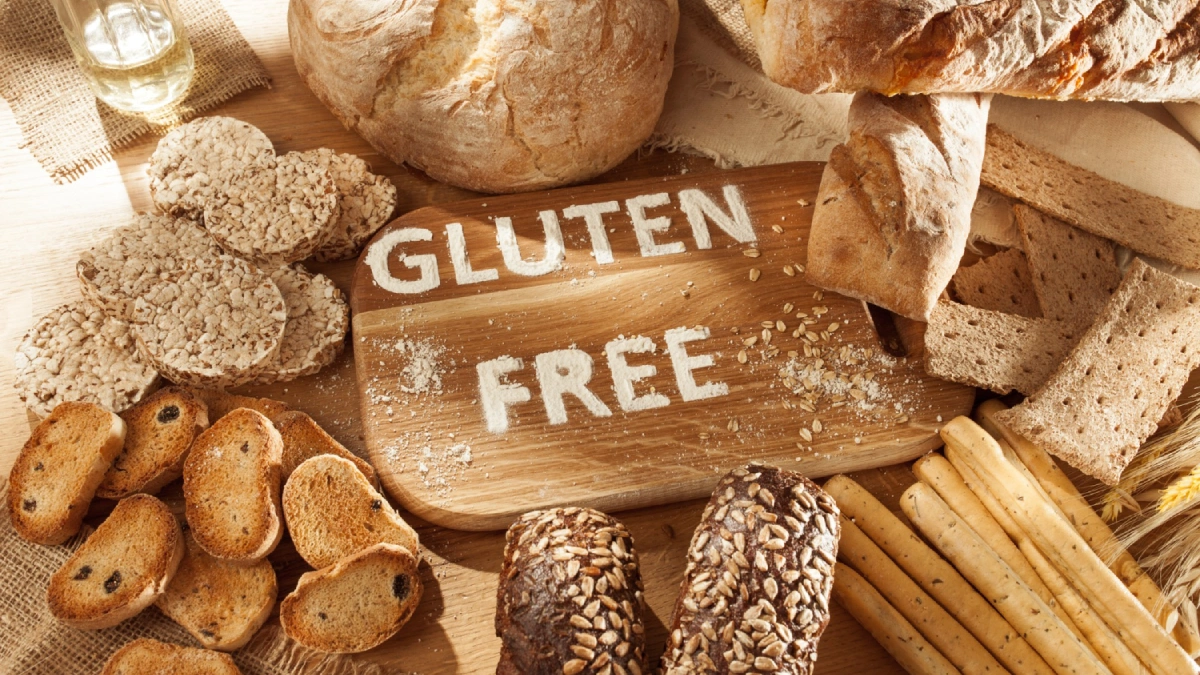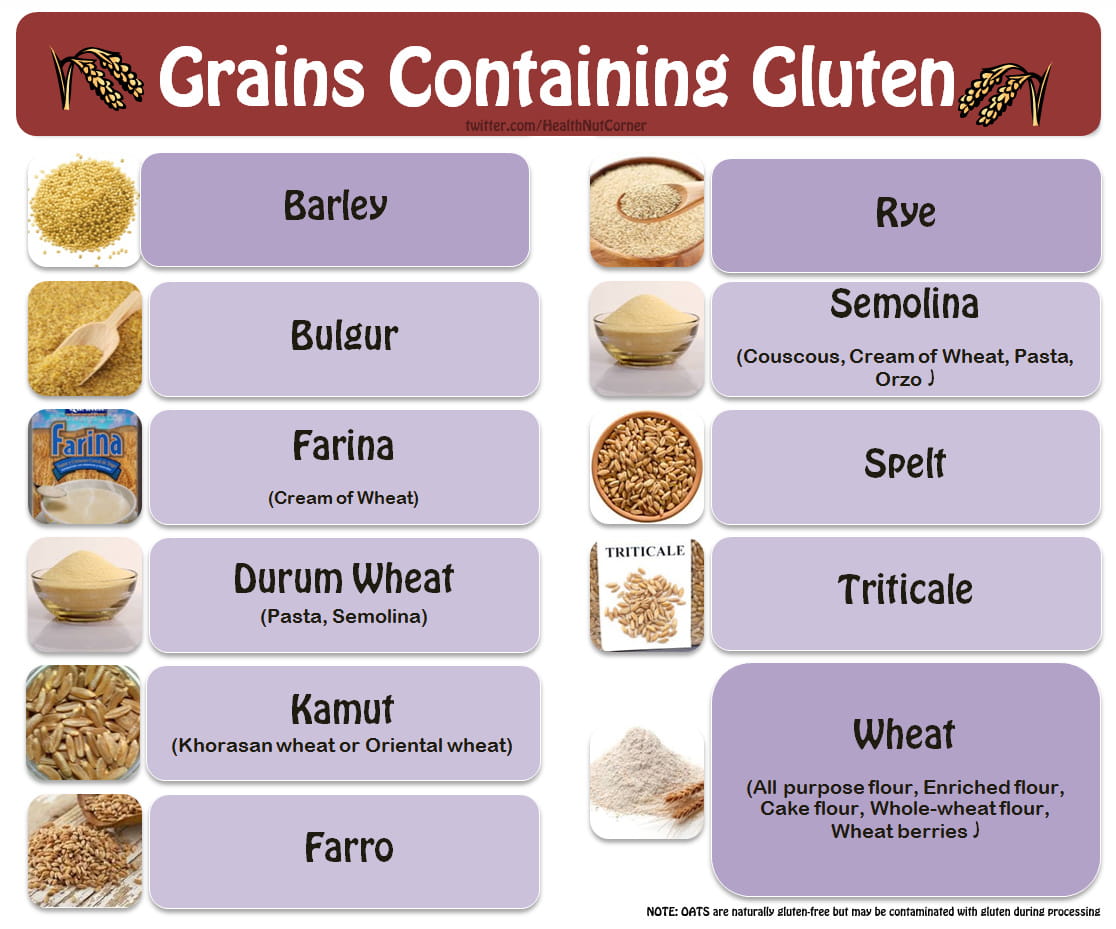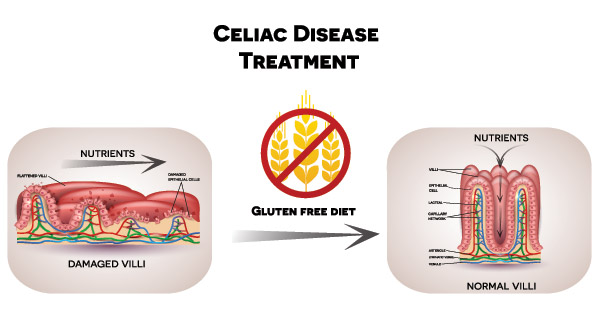In recent years, the terms gluten-free and gluten-inactive have become increasingly common in the food industry. Many consumers are left wondering about the difference between these two labels. Gluten, a protein found in certain grains, can cause adverse reactions in individuals with gluten-related disorders.

The distinction between gluten-free and gluten-inactive is crucial for those who need to avoid gluten entirely and those who can tolerate small amounts. This article will delve into the definitions, implications, and importance of understanding the difference between these two terms for maintaining a healthy diet.
Understanding the Difference between Gluten-Free and Gluten-Inactive
Gluten is a protein found in certain grains, such as wheat, barley, and rye. It gives dough its elasticity and structure, making it an essential component in baking. However, for individuals with gluten intolerance or sensitivity, consuming gluten can cause adverse health effects. This has led to the rise of gluten-free products and the concept of gluten-inactive. But what exactly is the difference between these two terms?
Gluten-Free
A gluten-free diet excludes all foods containing gluten. This includes grains like wheat, barley, and rye, as well as foods made from these grains, such as bread, pasta, and baked goods. Gluten-free products are made with ingredients that do not contain gluten, ensuring that they are safe for individuals with gluten intolerance or sensitivity to consume.
Gluten-Inactive
Gluten-inactive refers to foods that may contain gluten but have had the gluten deactivated or broken down, making it non-reactive and harmless to those with gluten intolerance or sensitivity. This can be achieved through various methods, such as heat treatment, acidification, or enzymatic degradation.
Key Differences
The main difference between gluten-free and gluten-inactive lies in the presence and activity of gluten. Gluten-free products do not contain gluten, while gluten-inactive products may contain gluten but it is not active. This distinction is crucial for individuals with gluten intolerance or sensitivity, as even small amounts of active gluten can cause adverse reactions.
Implications for Gluten Intolerant Individuals
For individuals with gluten intolerance or sensitivity, it is essential to understand the difference between gluten-free and gluten-inactive. Gluten-free products are generally safe for consumption, while gluten-inactive products may not be suitable, depending on the method used to deactivate the gluten.
Food Labeling Regulations
Food labeling regulations vary by country, but in general, products labeled as gluten-free must contain less than 20 parts per million (ppm) of gluten. There is no specific regulation for gluten-inactive products, as they may still contain gluten, albeit in an inactive form.
| Product Type | Description | Suitable for Gluten Intolerant Individuals |
|---|---|---|
| Gluten-Free | Products that do not contain gluten | Yes |
| Gluten-Inactive | Products that may contain gluten but it is not active | Depends on the method used to deactivate gluten |
What are the two different types of gluten?
Introduction to Gluten
Gluten is a type of protein found in certain grains, which provides elasticity and structure to dough, making it an essential component in baking. It is composed of two main proteins: gliadin and glutenin. These proteins are responsible for the chewy texture of bread and the ability of dough to rise.
Types of Gluten
There are two main types of gluten: monococcin and dicoccin. Monococcin gluten is found in einkorn wheat, which is an ancient variety of wheat. It is considered to be less toxic than dicoccin gluten, which is found in modern wheat varieties such as spelt and emmer.
- Monococcin Gluten: This type of gluten is found in einkorn wheat and is considered less toxic than dicoccin gluten. It is often used in gluten-free products.
- Dicoccin Gluten: This type of gluten is found in modern wheat varieties such as spelt and emmer. It is considered more toxic than monococcin gluten.
Impact on Health
Gluten can cause adverse health effects in individuals with certain conditions, such as celiac disease and non-celiac gluten sensitivity. These conditions can lead to symptoms such as abdominal pain, diarrhea, and fatigue. In severe cases, gluten can cause damage to the small intestine and impair nutrient absorption.
- Celiac Disease: This is an autoimmune disorder that causes the immune system to react to gluten, leading to inflammation and damage in the small intestine.
- Non-Celiac Gluten Sensitivity: This condition causes symptoms similar to celiac disease but without the immune system reaction and intestinal damage.
What happens to your body when you stop eating gluten?
Physical Changes
When you stop eating gluten, your body undergoes several physical changes. These changes can be beneficial for those who have gluten intolerance or sensitivity, but they may also cause temporary discomfort. Here are some of the physical changes you might experience:
- Weight loss: Gluten-free diets often lead to weight loss due to the elimination of high-calorie, high-carb foods that contain gluten. This weight loss can be beneficial for those who are overweight or obese.
- Improved digestion: Gluten can cause inflammation in the digestive system, leading to symptoms like bloating, constipation, and abdominal pain. Eliminating gluten can help alleviate these symptoms and improve overall digestion.
- Reduced inflammation: Gluten can trigger an immune response in some individuals, leading to inflammation throughout the body. By removing gluten from your diet, you may experience a reduction in inflammation, which can help improve overall health.
Mental and Emotional Changes
Gluten can affect not only your physical health but also your mental and emotional well-being. Here are some of the changes you might experience:
- Reduced anxiety and depression: Some research suggests that a gluten-free diet can help reduce symptoms of anxiety and depression, possibly due to the elimination of inflammatory compounds found in gluten.
- Improved mood: Gluten can cause mood swings and irritability in some individuals. By removing gluten from your diet, you may experience improved mood and reduced irritability.
- Increased energy: Gluten can cause fatigue and lethargy in those who are sensitive to it. Eliminating gluten can lead to increased energy levels and improved overall well-being.
Lifestyle Changes
Adopting a gluten-free diet can also lead to lifestyle changes that benefit your overall health. Here are some of the lifestyle changes you might experience:
- Healthier eating habits: A gluten-free diet often requires careful planning and attention to nutrition, which can lead to healthier eating habits and a more balanced diet.
- Increased awareness of food ingredients: When you stop eating gluten, you become more aware of the ingredients in the foods you eat, which can help you make healthier choices and avoid processed foods.
- Supportive community: Joining a gluten-free community or support group can provide emotional support and help you stay motivated to maintain your gluten-free lifestyle.
Do people with celiac gain weight after going gluten-free?
Understanding Celiac Disease and Gluten-Free Diets
Celiac disease is an autoimmune disorder that causes the immune system to react to gluten, a protein found in wheat, barley, and rye. When people with celiac disease consume gluten, it triggers an immune response that damages the small intestine, leading to malabsorption of nutrients. A gluten-free diet is the primary treatment for celiac disease, which involves avoiding all gluten-containing foods and beverages.
Weight Gain After Adopting a Gluten-Free Diet
It is common for people with celiac disease to experience weight loss initially after adopting a gluten-free diet due to the elimination of gluten, which can lead to a decrease in caloric intake. However, over time, some individuals may experience weight gain, especially if they do not maintain a balanced diet. This weight gain can be attributed to several factors:
- Increased calorie intake: Gluten-free products can be higher in calories than their gluten-containing counterparts, leading to an overall increase in caloric intake.
- Overconsumption of processed foods: Many gluten-free products are highly processed and contain added sugars, fats, and sodium, contributing to weight gain.
- Lack of fiber: Gluten-free diets can be low in fiber, particularly if they rely heavily on processed gluten-free products, which can lead to constipation and weight gain.
Maintaining a Healthy Weight on a Gluten-Free Diet
While it is possible to gain weight on a gluten-free diet, it is also possible to maintain a healthy weight by making conscious food choices. Here are some tips for maintaining a healthy weight on a gluten-free diet:
- Focus on whole foods: Prioritize whole, unprocessed foods such as fruits, vegetables, lean proteins, and whole grains like rice, quinoa, and corn.
- Choose low-calorie gluten-free products: Opt for gluten-free products that are lower in calories and added ingredients.
- Monitor portion sizes: Be mindful of serving sizes and control the amount of food consumed to maintain a balanced caloric intake.
Is gluten-free better than non gluten-free?
Is Gluten-Free Better Than Non Gluten-Free?
Gluten is a type of protein found in wheat, barley, and rye. It gives dough its chewy texture and helps it rise. However, for people with celiac disease, gluten can cause serious health issues. This has led to the rise of gluten-free diets and products. But is a gluten-free diet better than a non-gluten-free one?
Understanding Gluten-Free Diets
A gluten-free diet is not just for those with celiac disease. It has become a popular choice for those who believe it promotes weight loss or improves overall health. However, a gluten-free diet can be challenging to follow and may lead to nutritional deficiencies if not planned properly. It is essential to understand the benefits and drawbacks of a gluten-free diet before making the switch.
Benefits of a Gluten-Free Diet
- Relief for Those with Celiac Disease: For individuals with celiac disease, a gluten-free diet is not a choice but a necessity. It helps alleviate symptoms such as bloating, diarrhea, and abdominal pain.
- Weight Loss: Some people find that a gluten-free diet helps them lose weight. This could be due to the elimination of high-calorie, high-carb foods that contain gluten.
- Improved Digestion: A gluten-free diet can improve digestion in those who are intolerant to gluten. It may reduce symptoms such as bloating, gas, and abdominal pain.
Drawbacks of a Gluten-Free Diet
- Nutritional Deficiencies: A gluten-free diet can lead to deficiencies in fiber, iron, and B vitamins if not planned properly. It is crucial to include a variety of gluten-free foods in your diet.
- Higher Cost: Gluten-free products tend to be more expensive than their gluten-containing counterparts, making it a costly choice for those who do not require it for health reasons.
- Restrictive: A gluten-free diet can be challenging to follow, especially when eating out or at social gatherings. It requires careful planning and attention to food labels.
Frequently Asked Questions
What is the difference between gluten-free and gluten-inactive?
Gluten-free refers to food products that do not contain gluten, a protein found in wheat, barley, and rye. These products are made from ingredients that are naturally free of gluten, such as rice, corn, and potatoes, or have been processed to remove gluten. On the other hand, gluten-inactive is a term used to describe food products that may contain gluten but are not active or functional in the food system. This means that the gluten in these products is not able to form a network, which is necessary for the structure and texture of baked goods. Gluten-inactive products are often used in baking to create gluten-free products that have a similar texture to traditional baked goods.
How do I identify gluten-free and gluten-inactive products?
Identifying gluten-free and gluten-inactive products can be done by reading the ingredient labels and looking for specific certifications. For gluten-free products, look for ingredients that are naturally gluten-free or have been processed to remove gluten. Also, check for certifications like the Gluten-Free Certification Organization (GFCO) or the Celiac Support Association (CSA). For gluten-inactive products, the ingredients may include gluten-containing grains, but the gluten has been inactivated through processing. These products may not have specific certifications, but they will often be labeled as gluten-inactive or gluten-denatured.
What are the benefits of choosing gluten-free and gluten-inactive products?
Choosing gluten-free and gluten-inactive products can have several benefits, especially for individuals with gluten intolerance or sensitivity. For those with celiac disease, consuming gluten can cause damage to the small intestine, leading to malabsorption of nutrients. By choosing gluten-free products, these individuals can avoid the negative health effects associated with gluten consumption. Gluten-inactive products can also provide a similar texture to traditional baked goods, making them a good option for those who want to maintain a gluten-free diet without sacrificing taste and texture. Additionally, both types of products can be beneficial for individuals who simply prefer a gluten-free diet for personal or health reasons.
Can gluten-free and gluten-inactive products be used interchangeably in recipes?
Gluten-free and gluten-inactive products can be used interchangeably in recipes, but it is important to understand their differences to achieve the desired texture and structure. Gluten-free products are ideal for recipes where gluten is not necessary for structure, such as in cakes and cookies. However, in recipes that require structure and texture, like bread and pasta, gluten-inactive products may be a better option. This is because gluten-inactive products can provide a similar texture to traditional gluten-containing products, while still being safe for those on a gluten-free diet. When substituting one for the other, it is important to adjust the recipe accordingly, as gluten-free products may require additional binders or thickeners to achieve the desired consistency.
I’ve been working in technology and IT since 1993 and on the Internet as a blogger and webmaster since 2004. I love technology, gadgets, movies and travel. I love researching and writing about technology, travel and cars.




